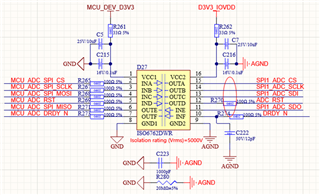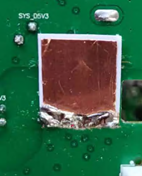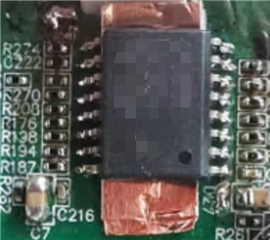Other Parts Discussed in Thread: STRIKE
Hello, I am using ISO6762 to isolate the SPI communication bus of my ADC device, and when testing the HCP for ESD, I found that it has an effect on the communication, it will incorrectly output the DRDY signal of the ADC, and the value of the ADC conversion received by the SPI will be incorrect, which doesn't exclude that the DRDY is being triggered in advance to read the wrong data. When I remove the isolation and connect the GND of the isolated signal with a wire, the test can pass; when I put back the isolator and keep the isolation GND shorted, the test will be wrong; when I remove the isolation GND, the test error will become very frequent, I tried to replace the isolator IS3762 from other vendors, and it is OK to pass in the same PCBA, so I suspect that there may be a problem with the ISO6762. I hope to get your reply and support, thanks!




